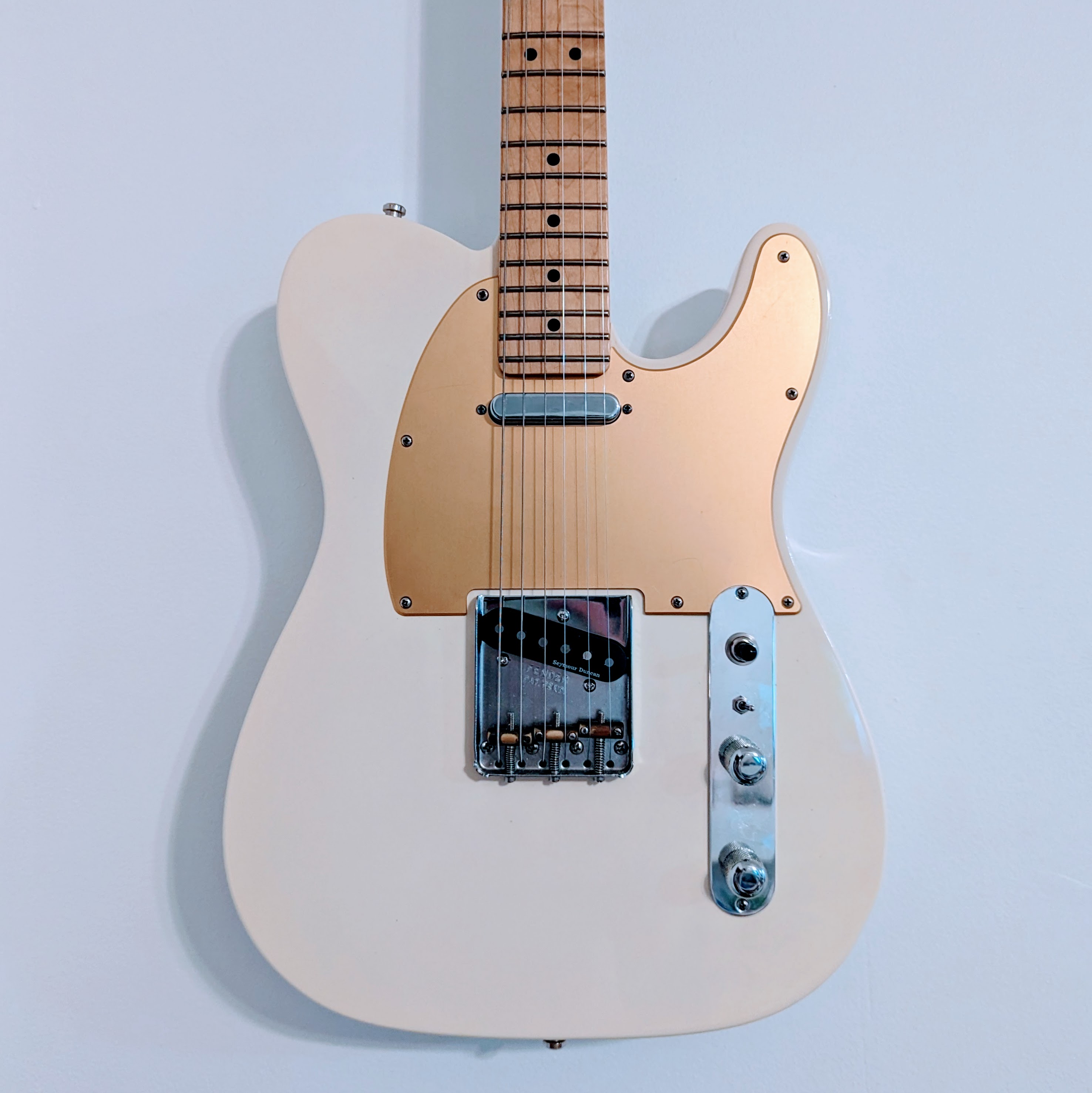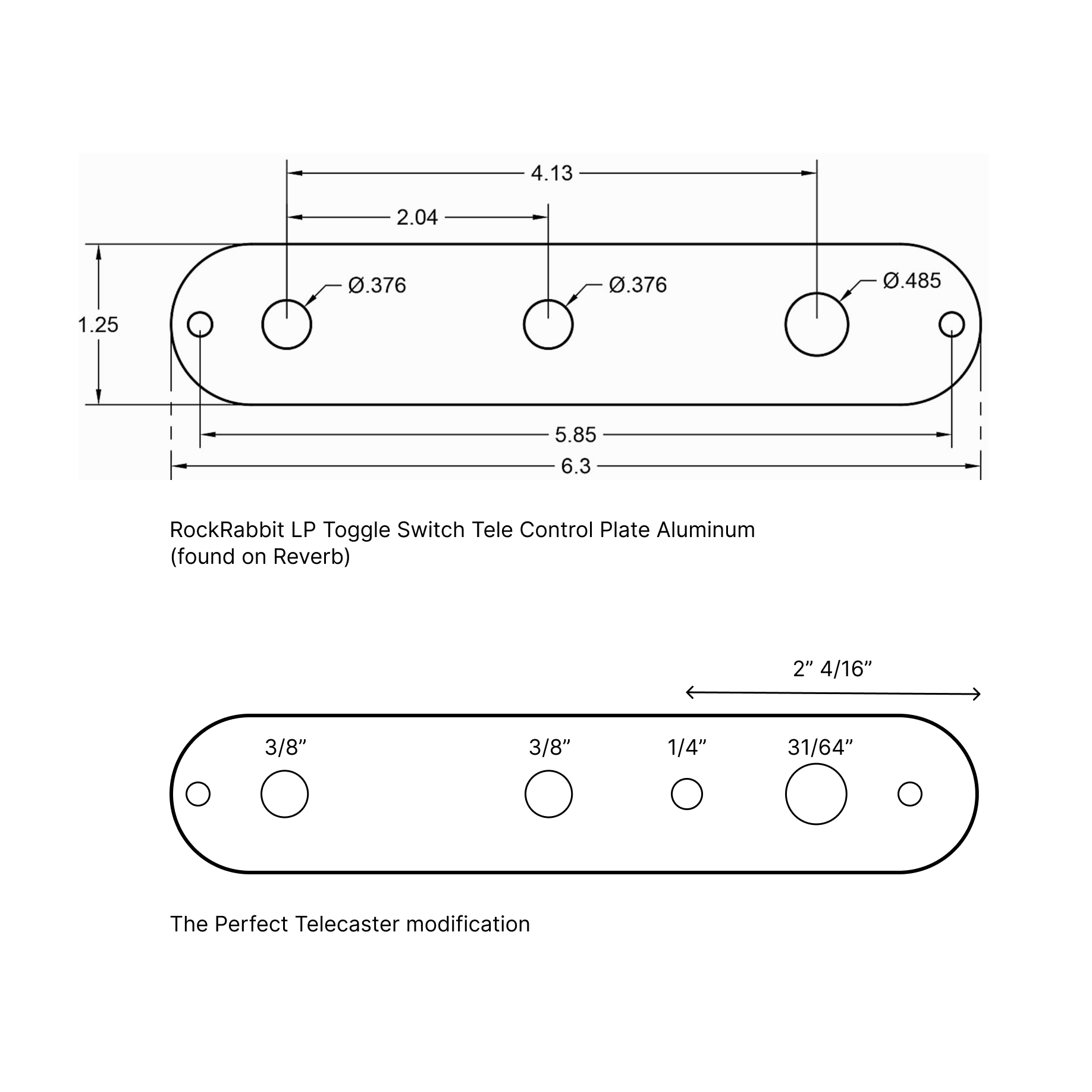The Perfect Telecaster
August 1, 2024
Jimmy Page has been my favorite guitarist ever since I first saw It Might Get
Loud. Since then I've listened to hundreds or thousands of hours of Led Zeppelin
albums and they still never get old.
Page doesn't just make playing guitar look easy - he makes it look downright sloppy.
Here's my favorite clip from the movie:
He's not just playing guitar, he's playing time itself!
When I first saw this clip in high school, I was playing an Epiphone Les Paul; the same
design, albeit considerably cheaper, that Page plays in the clip. I upgraded to an
American Telecaster a few years later and have played the same guitar ever since.
The Telecaster is almost the perfect guitar. Page, most closely associated with his
"Number 1" Les Paul today, actually played a Telecaster on the first Led Zeppelin album.
(Led Zeppelin was recorded in about 30 hours of studio time - start to finish, including
mixing - over the course of only 3 weeks. What a band.)
My philosophy when playing guitar is to never achieve with a pedal what I can do with
nature. In the video, Page overdrives his amp not with a pedal, but by switching from
his neck pickup (set to a lower volume) to his bridge pickup (set to a higher volume).
What results is the basic physical reality of his guitar's voltage swinging too high for
the amp and getting clipped... overdrive.
You can't play Ramble On the way Page does in this clip with a standard
Telecaster. A Telecaster has a three way switch, a volume knob, and a tone knob. While
you can switch between the neck and bridge, you can't set them to two different volumes.
There's only one volume knob controlling both pickups. Fender addresses this with their
dual volume Telecaster Deluxe, but in the process sacrifices the most important thing of
all - the iconic Telecaster look.
After years of being bothered by this and seeing no reason (or room in our Brooklyn
apartment) to buy a Les Paul Standard, I ordered a soldering iron and resolved to crack
open my beloved guitar.
After careful consideration, I decided on the following modifications:
1. Two volume knobs, so you can quickly and naturally overdrive the guitar.
2. A Les Paul three way switch because it is in every way superior to the Telecaster's.
3. No tone knob, cause who uses it anyways?
4. A two way series/parallel switch.
The first two points are obvious given what I described above. The latter two were forced
on me by space constraints, but necessity being the mother of invention, I dare say I've
perfected the Telecaster.
The last dial on a standard Telecaster, the tone knob, is pretty useless. I'd argue the
only time it is used is to show off, which really just makes my point. Replacing
it with a second volume knob is a common modification.
But the tone knob, however flawed, does represent an ideal: it's nice to have options!
Even if those options are (if we're being honest) "spin it to one end" and "spin it to
the other end".
Since most players' tone knob experience is practically binary, I decided to both
approximate and improve on that real world reality with a two way series/parallel
switch. I'll skip what that means in detail, but imagine it as a switch between "more
signal" and "a little less signal".
When I set out to make this change, I figured someone must have already done this. And
perhaps they have... but not on the internet. I could not find a single wiring diagram
online. With no soldering experience and having never modified a guitar before in my
life, I drew my own diagram and learned how to solder.
The result is the perfect Telecaster. In parallel, the guitar plays and sounds like you
just got it from the factory. It still looks like a Telecaster, yet the switch offers a
Les Paul's dynamic flexibility. And in series, there's even more drive. Sweet
perfection.


